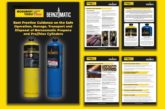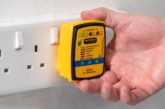
The Personal Protective Equipment at Work Regulations 2022 came into force on 6 April 2022, updating the 1992 Regulations to extend employers’ and employees’ duties around PPE to a wider group of workers.
PPE is defined as equipment that protects the user against health or safety risks at work. Examples include; safety helmets, eye protection, safety footwear, gloves, protective clothing such as high-visibility garments and safety harnesses. It also includes respiratory protective equipment (RPE).
What’s changed and why
Under the new rules, employers must ensure workers who carry out casual work (known as limb workers) receive the same level of protection as employees.
The amendments result from a High Court ruling that found the UK Government had failed to properly implement EU health and safety directives to protect ‘gig economy’ and precarious workers.
The changes come into force at a time when TUC research shows the number of people working for the gig economy has almost tripled in the past five years.
What is a limb worker?
According to section 230(3) of the Employment Rights Act 1996 the definition of a worker in the UK has two limbs:
- Limb (a) refers to employees under the Health and Safety at Work etc Act 1974 who are already in scope of PPER 1992
- Limb (b) covers casual workers working under a contract for service who are not currently covered by PPER 1992
Broadening the definition of “worker”
Under PPER 2022, a new definition of the term “worker” is introduced that captures both employees and limb (b) workers. A “worker” according to PPER 2022 applies to “an individual who has entered into or works under:
(a) a contract of employment; or
(b) any other contract, whether express or implied and (if it is express) whether oral or in writing, whereby the individual undertakes to do or perform personally any work or services for another party to the contract whose status is not by virtue of the contract that of a client or customer of any profession or business undertaking carried on by the individual; and any references to a worker’s contract shall be construed accordingly.”
General duties of limb (b) workers
Every employment relationship is individual, but, in general, workers who come under limb (b):
- carry out casual or irregular work for one or more organisations
- after one month of continuous service, receive holiday pay but not other employment rights such as the minimum period of statutory notice
- only carry out work if they choose to
- have a contract or other arrangement to do work or services personally for a reward (the contract doesn’t have to be in writing) and only have a limited right to send someone else to do the work, for example, swapping shifts with someone on a pre-approved list (subcontracting)
- are not in business for themselves (they do not advertise services directly to customers who can then also book their services directly)
It should also be noted that the changes don’t apply to those who have ‘self-employed’ status.
What must businesses do to comply?
By 6 April 2022, businesses with only limb (b) workers must provide PPE free of charge to these workers where it is needed. All PPE should be compatible, maintained and stored correctly with training and instruction provided for its correct use. Meanwhile, workers have an obligation to report lost or defective PPE to employers.
Businesses with both employees and limb (b) workers must ensure from 6 April 2022 that there is no difference in how PPE is provided to these workers. This means companies will need to supply the same level of protection to all “workers” as defined by PPER 2022 who need PPE regardless of their employment status.
The following HSE guidance regarding PPE at work is useful to keep in mind when assessing PPE requirements:
- It is essential to put in place all necessary safe systems of work, control measures and engineering solutions so that use of PPE is minimised
- Where PPE is needed it must be the most appropriate for the identified risk and should only be issued where it further reduces the level of risk
- PPE is a safeguard of last resort since it only protects the individual wearer
More information about the changes can be found here













